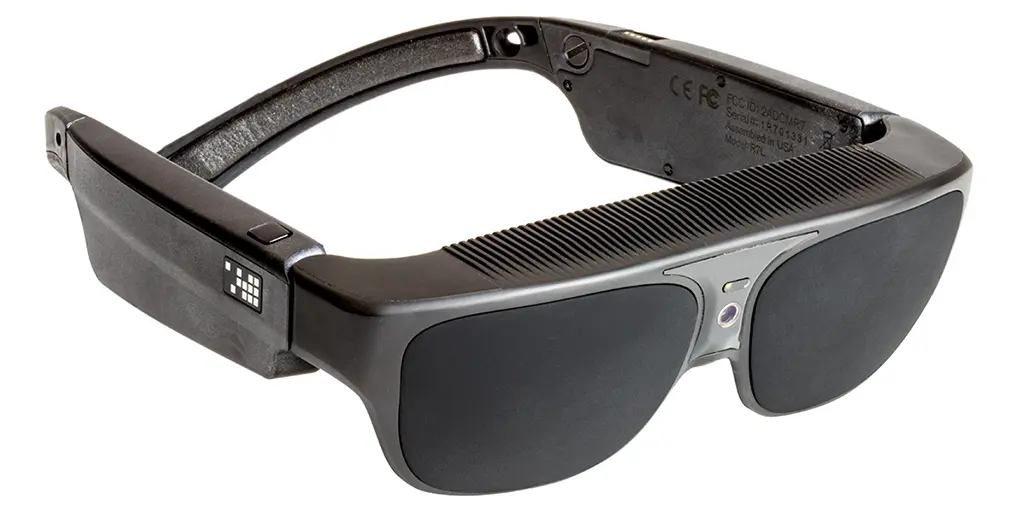Discover Advanced Assistive Instruments for People With Aesthetic Impairments
The landscape of assistive innovation for people with aesthetic problems is evolving rapidly, providing a variety of cutting-edge tools that enhance autonomy and engagement. From smart glasses that perfectly merge visual input with acoustic advice to innovative navigating applications that redefine spatial recognition, these devices are improving opportunities.
Smart Glasses Innovations
Smart glasses stand for a substantial improvement in assistive innovation for individuals with aesthetic problems. These cutting-edge devices integrate different functions designed to boost the user's communication with their setting. Geared up with sensors and cameras, clever glasses can capture real-time visual details, which is after that processed and shared to the individual via sound feedback or haptic experiences. This performance allows people to get immediate summaries of their surroundings, enhancing their ability to browse and engage with the globe.
Furthermore, innovations in expert system have additionally improved the capacities of smart glasses. Artificial intelligence algorithms can acknowledge faces, reviewed text, and determine things, making them indispensable devices for daily tasks. Individuals can obtain auditory hints that give context about their atmosphere, promoting freedom and confidence.
Furthermore, the ergonomic style and light-weight nature of several smart glasses make them appropriate for long term usage, ensuring comfort while enhancing performance. As these tools proceed to evolve, they hold the prospective to reinvent the method people with visual impairments experience their lives, connecting the space in between access and modern technology. The ongoing research study and development in this field promise to expand the possibilities for smart glasses, making them an important element of modern-day assistive devices.
Navigation Application and Equipment
Countless navigating applications and devices have become essential sources for people with visual impairments, considerably improving their ability to traverse unfamiliar environments. These technologies leverage GPS performance, audio hints, and real-time data to offer individuals with accurate navigation aid.
One noticeable instance is the Aira application, which links individuals to trained agents that can offer visual summaries of environments and navigation guidance via a real-time video feed. This service boosts the customer's spatial understanding and confidence while browsing. One more noteworthy tool is Seeing Eye GPS, which uses voice-guided navigation and sights, allowing users to accessibility vital details concerning their environments.

As innovation remains to advance, the growth of more sophisticated navigating tools promises to more equip individuals with visual problems, assisting in seamless flexibility and assimilation into varied atmospheres. Such innovations are instrumental in advertising a more comprehensive society.
Braille Technology Innovations
Recently, improvements in Braille innovation have actually considerably transformed just how individuals with visual disabilities gain access to information and engage with the globe around them. The development of mobile Braille displays has reinvented reading by permitting users to connect wirelessly to smartphones, tablets, and computers. These devices transform message into Braille in real-time, making it possible for smooth communication with electronic web content.
Additionally, innovative Braille printers have arised, improving the manufacturing of tactile products. Modern embossers are much faster and more effective, permitting for the rapid production of Braille files and academic materials. This efficiency lowers the time and expense linked with creating Braille sources, making them a lot more obtainable to organizations and schools.
Additionally, the assimilation of Braille with various other innovations, such as expert system and artificial intelligence, has opened new opportunities for personalized knowing experiences. Voice acknowledgment and synthesis technologies can enhance Braille, giving a comprehensive approach to details circulation.
As the demand for comprehensive education and learning and workplace atmospheres expands, these technical developments play a critical role in equipping people with visual disabilities, guaranteeing they have equal access to info and possibilities in numerous aspects of life.
Wearable Devices for Freedom
An expanding variety of wearable tools is boosting self-reliance for individuals with aesthetic problems, providing ingenious solutions that enhance navigating and everyday living. Braille displays and notetakers. These devices use advanced innovations to give real-time feedback and assistance, promoting freedom in numerous environments

Wearable innovation also consists of smartwatches that can be programmed with access attributes, allowing users to get alerts, track their areas, and even require assistance with the touch of a button. Some gadgets include artificial knowledge to assess the environment, offering sound summaries of nearby items or people.
Voice-Activated Assistive Solutions
Leveraging voice-activated assistive solutions has changed the landscape of support for individuals with aesthetic impairments, giving hands-free interaction and accessibility to a variety of jobs. These innovations utilize natural language processing and artificial intelligence to make it possible for customers helpful resources to do everyday tasks with simple voice commands.

In addition, current developments in voice acknowledgment precision have improved the customer experience dramatically, accommodating varied accents and speech patterns. This inclusivity makes certain that even more individuals can benefit from these technologies, promoting a better feeling of autonomy.
Conclusion
Finally, the advancement of sophisticated assistive gadgets substantially enhances the independence and high quality of life for people with aesthetic disabilities. Developments such as clever glasses, navigating applications, Braille check this technology, wearable gadgets, and voice-activated solutions jointly promote a more comprehensive setting. These technologies empower users to browse their environments with confidence and engage even more fully with the globe, ultimately promoting better availability and level playing fields for individuals facing aesthetic obstacles.
The landscape of assistive modern technology for individuals with aesthetic problems is progressing swiftly, presenting an array of ingenious devices that improve freedom and interaction.Smart glasses represent a significant improvement in assistive innovation for people with aesthetic impairments. As these tools continue to progress, they hold the possible to change the way individuals with aesthetic problems experience their day-to-day lives, connecting the void in between access and technology.In current years, improvements in Braille modern technology have significantly changed how individuals with aesthetic disabilities accessibility details and engage with the world around them. These modern technologies empower users to browse their environments with confidence and engage even more fully with the world, ultimately advertising greater availability and equivalent chances for individuals facing aesthetic difficulties.